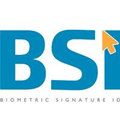My Identity Thief Loves Me (PTII)
Robert Siciliano Identity Theft Expert
In “My Identity Thief Loves Me (PTI)” I brought you into my weird world of “research” into online dating scams. Here’s where I fell in love. I have been perused by “Kath Riss Green”. For whatever reason the scammers choose very WASPy names. But her picture was a hot Latina. She sent me a message via a social network I’m on. So I responded via a completely different profile I set up that had nothing to do with the original. And “she” didn’t seem to notice or care: I am “Ronn”.
1/17/10 Scammer: Hi,I saw your profile and wanted to say hello. Your very handsome and Id like to get to know you better.
1/18/10 Me: Hi back, you sent me an email on my profile. You look good to me. What is your name? Ronn.
1/19/10 Scammer: thanks for your email Ronn…..i’m kathline,i live and work in texas..i’m 30years,single and never with no kids,i love kids though.i would like to know more about you,where you from,what you do and many more…hope to read back from you, kathline
See the bad English and punctuation? The criminal hacker I wasted 4 hours with from Ghana wrote the exact same way.
1/19/10 Me: Hi Kath, I’m basically a nice guy… I want a woman to like me for who I am. I like eating pizza and I like to drink beer. I’m a little overweight. I’m 5′ 2″ and 220 lbs, but my mom says Im handsome. What do you look like? Ronn
1/19/10 Scammer: Hello Ronn, How you doing an how was your day like?SO where you from?what do you do?are you married?got any kids?and what you ooking for?do you have any photo you can send to me?i would like you to tell me everything about yourself……….i’ve added you to my yahoo lit and hope to chat with you later on……attached are my pics.hope you will like them Kathline
1/19/10 Me: Wow, You’re very pretty! I’m from Massachusetts. My day was long I worked hard today. Gotta pay the bills! I work in an office as a word processor. Not married, one kid from when I was younger, his mom has him. Just looking for someone to love me like I love them. My camera dropped over the holidays and I need to get another one. Do you have kids? Ronn
1/20/10 Scammer: Hi Ronn,sorry to hear about your day….wish i was there to keep your accompany….i’m also single,nerver maried with no kids..i love kids though,and i hope to have some with the right man someday..So tell me since when you’ve been doing online dating and how many woman have you meet online lately?what kind of relationship are you looking foir? Kathline
1/20/10 Me: No kids! Thats OK. Ive been doing the online dating thing for about 6 months. I just got a computer over the summer. i used to go to the library and use their computer, so Im new to this. All the women I have send messages to dont respond all that much. But you were nice to me first… Im looking for a relationship where the woman can be nice to me and treat me with respect, as I am nice to her and treat her with respect. I also wish that she can cook because I like to eat ALOT!!! LOL!!! Truly Ronn xoxoxox
I’m baiting
1/20/10: Hi Ronn,hhmmm….i guess i’m the one you’ve loking for all thiswhile…i’m someone who is loving,caring and God fearing,a down to earth type with great sense of humour..i love the out doors,i enjoy cooking,i like holding hands,kissing and cuddling….i wish things could ork out between us…..
It pisses me off when they weave the God thing in there. Heartless bastards!
1/22/10 Me: OMG THATs SO SWEET! You sound like my soul mate! Im sorry that I have not responded, I had to go away on business. I would LOVE TO MEEET YOU!!!
1/22/10 Scammer: Ronn,I went to bed last night with a vision of you next to me. I slept like a baby all night, because I was not feeling alone.. When I awoke this morning to see if it was real or if it was a dream, realty hit me that it was only a dream. Very soon, I know that you will be right next me…i will also love to meet you for a weekend or so…..we can plan on meeting if you dont mind,i can come there but thaats if only we can both work the airfares together or what do you think?
Boom, 5 days into it and “airfare” comes up. I sound like a lonely desperate fool, I haven’t sent a picture, I’m built like a walrus. And Kath is dreaming about me. What a !@#$%^ SCUMBAG!
1/22/10 Me: Wow, this is wonderful! im flexible. I’ll do what you wish. Tell me what you would like to do.
1/23/10 Scammer: Jon said it will cost me 560$ to fly there and i cant afford it all…i dont know if you can make and half payment while i had up the rest..
Who the heck is Jon? I don’t even bother asking.
1/24/10 Me: Im happy to pay half. How do you want to do it? Ronn
1/24/10 Scammer: Awwww thanks then, i do appreciate that, just get the half down to jon so he can go ahead with the reservation, and you know we have to book in advance.. below is Jon Details for the payment. send it through western union, and get back to me with the MTCN, the name, of thw sender, and location of where money is sent. hope to read from you soon
1325 ***pe dr,
Paris, TX 75462
One week, 2 idiots, 7 email exchanges, an opportunity to expose a complete azz@#%, PRICELESS.
Turns out, after further research “Jon” is a victim too. He is 54 and divorced. He has been duped by “Kath” as a money mule. So when the wired money goes to Jon, he sends to Kath. Here is Kath kathlinegreen36@yahoo.com.
1/27/10 Me: Can I call you on the phone?
1/27/10 Scammer: Hello Ronn, WHy did it take you few days to get back to me?you just keep runing through my mind and my heart longfs to be with you….my phone got missing last weekend….so how you doing and how’s work being like?were you able to send the money..
Of course your “phone got missing last weekend” so how YOU doing? Jerk.
1/27/10 Me: Are you a complete scumbag scammer?
Then no more response. Was it something I said?
Protect your identity:
- Get a credit freeze. Click on the preceding link and follow the steps for your particular state. This is an absolutely necessary tool to secure your credit. In most cases, it prevents new accounts from being opened in your name. This makes your Social Security number useless to a potential identity thief.
- Go to my website and get my FREE ebook on how to protect yourself from the bad guy.
- Invest in Intelius identity theft protection and prevention. Not all forms of identity theft can be prevented, but identity theft protection services can dramatically reduce your risk. (Disclosures)
Robert Siciliano Identity Theft Speaker discussing identity theft on Fox News

























